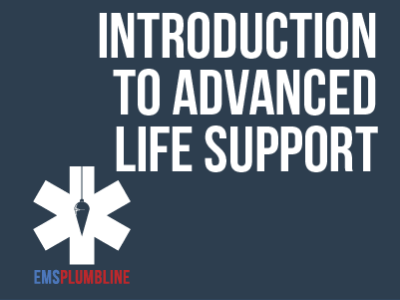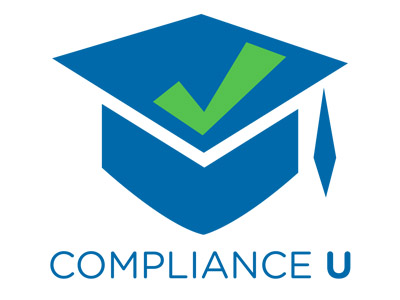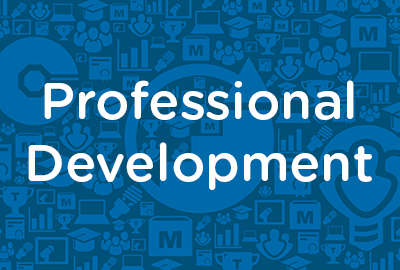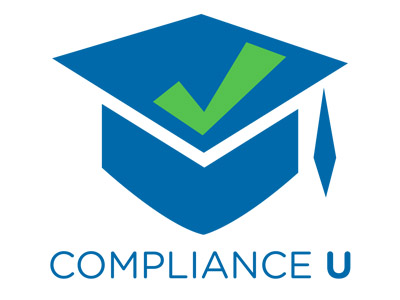 |
Constructing: Airway Essentials—Part 2 |
0.50 |
Most paramedics will remember walking around town during their original paramedic school and deciding which patients would be a "tough tube." If that describes you when you first started, you will appreciate this brief review. Dr. Christopher Galton takes the time to takes the time to give a memorable examples of the mnemonics LEMON and BONES, which prove to be a fantastic teaching tools. We think you will enjoy the illustrations that allow you to remember these important evaluations. Final Exam: This multiple choice exam is designed to test your knowledge of the material you just reviewed. You have two attempts to gain an 80% or higher on this exam. Please take your time and answer each question carefully.
|
 |
Providing Homework Support: Types of Homework Support |
1.00 |
Research indicates there are many different ways to provide effective homework support in school-age programs. When planning a homework support program, it is important for school-age programs to develop a homework philosophy that is consistent with the program’s overall philosophy, and reflects current research on best practices for providing homework help. The homework philosophy should also reflect the needs of parents and children in the program, and strike a balance between homework needs and other experiences that help children grow and learn out-of-school. In this course, we will explore the various types of homework support. |
 |
Learner Development and Individual Learning Differences |
2.00 |
This course covers the different characteristics of students and their unique learning needs. It highlights the impact of disabilities on the development of individual students and their families and how best to support them. This course will help you develop new knowledge about students and help you understand your role as a paraprofessional. It is just one of the many paraprofessional courses we offer. |
 |
The Stages of Escalation and How to Manage Them |
1.00 |
We know that the most effective learning is relationally based. The same is true when we intervene with students in crisis: the deeper we’ve established relationships with students, the more power we have to guide them to calm and safety. Crisis situations can leave a wake of difficult thoughts and feelings. Students and teachers can feel lingering shame, anger, fear and confusion for days—even weeks or months—after a traumatic event. The good news is that crisis situations do not have to be harmful to a relationship, and in fact, they can serve as a doorway to deeper trust, intimacy, and respect. |
 |
Grammar Skills: Word Choice |
1.00 |
This course covers how to choose the appropriate words for clear communication and how to recognize and use frequently misused words correctly. You will also learn how to avoid common spelling errors and correctly attach prefixes and suffixes to words. |
 |
Preventing Sexual Harassment and Understanding California Law |
0.50 |
This course will teach California employees how to recognize sexual harassment, defines the rights and responsibilities of employers and employees, and provides an overview of the legal remedies available in sexual harassment lawsuits. |
 |
Cross-Cultural Business Communication: Addressing Cross-Cultural Issues (Instructor Guide) |
1.00 |
When communicating with coworkers, it is very important to respect other cultures. You should refrain from using humor that might offend people from other cultures, and avoid stereotypes that might affect how you treat your coworkers.
Before communicating with employees who belong to a different culture, it is important to research their cultures and understand clearly what is expected from your communication. You should determine what types of communication are most appropriate in specific situations. For example, you should investigate the most appropriate method for communicating a behavioral problem to an employee. Some cultures prefer profuse praise to cushion the constructive feedback, while others prefer a more direct approach. The most important thing to communicate to employees of different cultures is respect. By approaching them in accordance with their cultural standards and expectations, you’ll show respect for their cultures and your communication will be enhanced.
In this course you will learn to: identify gestures used in different cultures and build a cross-cultural team, and discuss guidelines for writing cross-cultural documents and assembling a translation team.
This Instructor's Edition of this course includes notes and suggestions to assist you in presenting the material, whether in an in-person classroom setting, or as an instructor-led online or distance-learning course. It also provides you with the answers to questions found in mid-lesson activities, as well as in the quiz that concludes the course. |
 |
Making Your Home A Safer Place |
0.75 |
This course covers household safety. This includes fire and kitchen safety, emergencies, infant safety, and more. This course will help you learn about the best practices for everyone inside the house, from infants to pets. It is just one of the many health and safety courses we offer. |
 |
Conventional Forcible Entry #701 (Instructor Guide) |
1.50 |
This is the Instructor Guide for Lesson #701 Conventional Forcible Entry. This Instructor Guide is intended to prepare a lead instructor to deliver this course curriculum. Included in this guide is a review of lesson content, lesson resources, and required lesson materials. The lead instructor must pass this instructor guide course with a minimum score of 80% to receive the course materials for this lesson. |
 |
Project Management - Basic: Scope Definition, Verification, and Change Control |
1.50 |
This course will cover how to identify the process and benefits of scope definition and verification, and develop a work breakdown structure (WBS) and work package. You will also learn how to identify the types of information that stakeholders need in order to verify a project’s scope, and determine the timing of scope verification. You will be able to better understand how to control changes in project scope, identify the benefits of a scope change control system, and describe why it’s important to create a project database. |
 |
GED: Reasoning Through Language Arts - Unit 7: The Extended Response |
1.00 |
Welcome to Unit 7: The Extended Response. The last part of the RLA section is the Extended Response, or essay. Here's how it works. You'll be given something to read - a source text or texts - and asked to write an essay in response to a prompt related to the reading. In this unit, we'll learn about two types of essays and take a look at an example of each one. |
 |
The Importance of Sensory-Rich Play (CDA 2) |
2.00 |
This course explores the research-backed benefits of this exciting form of play, from fostering essential developmental skills to sparking joy and curiosity. However, navigating regulations and concerns in early care settings can be tricky. Dive into practical strategies to empower young children in making choices and assessing risks amidst sensory-rich, highly physical activities, nurturing confident explorers with a deep love for learning. |
 |
Bloodborne Pathogens and HIV (Corrections) |
1.00 |
In this course, you will learn about the characteristics of bloodborne pathogens, diseases caused by these pathogens, such as HIV, and how they are transmitted. You will also learn the elements of an exposure control plan and how to prevent contact with or infection from contaminated body fluids. In addition, you will learn how to handle exposure incidents involving blood, and the signs, labels, and color-coding used to warn of biohazards and bloodborne pathogens. This training is provided to help employers provide a safe and healthful work environment for their employees and minimize the possibility of employee exposure to bloodborne pathogens. |
 |
Combating Sexual Harassment in the Workplace (NY) |
1.00 |
In recent years, the topic of sexual harassment in the workplace has been brought into the national spotlight, bringing with it renewed awareness about the serious and unacceptable nature of these actions and the severe consequences that follow.
Under state law effective October 2018, every employer in New York is required to establish a sexual harassment prevention policy which includes annual training, pursuant to Section 201-G of the Labor Law.
This course was created by CypherWorx based on the 2023 update of the training materials developed by the New York State Department of Labor and Division of Human Rights, and is designed to meet or exceed standards required by state law. |
 |
Creativity and Innovation: Promoting Team Creativity (Instructor Guide) |
1.34 |
The purpose of a team is to bring together people with diverse personalities, knowledge, education, and experience. This combined diversity encourages creativity and productivity to accomplish a common goal. Teams might consist of people from a single department or several departments.
Teams can generate new ideas, expand on or improve current ideas, make decisions, and solve problems. Teams can also be assigned to a specific task or be made responsible for a broader area, such as responding to changing customer expectations. When team members recognize their roles in a team, and the manager performs his responsibilities, creativity has a better chance of flourishing.
In this course you will learn to: identify characteristics of creative teams, and manage these teams effectively, conduct creative team sessions, and conduct brainstorming sessions, and use creativity to solve problems.
This Instructor's Edition of this course includes notes and suggestions to assist you in presenting the material, whether in an in-person classroom setting, or as an instructor-led online or distance-learning course. It also provides you with the answers to questions found in mid-lesson activities, as well as in the quiz that concludes the course. |
 |
Lemurs |
2.00 |
In this module, you'll learn about the natural history and conservation of a fascinating group of primates: lemurs. |
 |
Quality Management: The Costs Of Quality |
0.50 |
Before the quality revolution that began in the United States in the 1980s, quality was frequently viewed as a goal that came at a higher price for production. However, the reality is that poor quality is a result of the ineffective use of resources, including wasted material and labor. Therefore, improved quality means better use of resources and lower costs.
In this course you will learn to: identify the relationship between quality and cost, the benefits of establishing quality requirements, management’s responsibilities for achieving conformance, and the costs of customer dissatisfaction. |
 |
Communicating with the Deaf Sign Language User |
1.00 |
This training was developed by Dr. Jason Rotoli, Deaf Health Pathways Director, University of Rochester School of Medicine and Dentistry in conjunction with Dr. Jeremy Cushman, Chief of the University of Rochester’s Division of Prehospital Medicine. Funding for the Care of the Culturally Deaf education was provided by Society of Academic Emergency Medicine. Continuing Education provided by EMSPlumbline
Final Exam: This multiple-choice exam is designed to test your knowledge of the material you just reviewed. You have three attempts to gain an 80% or higher on this exam. Please take your time and answer each question carefully. |
 |
Spinal Motion Restriction Decisions |
1.50 |
Two of the University of Rochester’s finest educators discuss the decision-making that is involved with Spinal Motion Restriction.This enlightening discussion offers information that will allow providers to better interpret standing protocols.Subsequently providers will be able to create and execute better treatment plans.
Jeremy Cushman M.D., M.S., NYS Paramedic is the Chief of the Division of Prehospital Medicine, Department of Emergency Medicine, at the University of Rochester.
Mark Gestring, M.D., F.A.C.S., is the Director of Adult Trauma at the University of Rochester’s Regional Trauma Center.
Enjoy the conversation as these two experts in their respective fields escort you through the nuance that every provider should consider when treating a patient with possible spinal trauma. |
 |
I Belong: Supporting Social Awareness and Interpersonal Skills |
2.00 |
We all have lived full lives with varied experiences, both positive and negative. Whether we are aware or not, our experiences, including our social, political and cultural beliefs and background, affect our practice with youth. During this course, participants will learn about how culturally grounded beliefs and background affect our practice with youth, how to help raise our awareness of those factors, and reflect on current and new strategies that support the development young people’s social-awareness and interpersonal skills. |
 |
Current Trends and Issues in Out-of-School Time Programs |
2.00 |
It is important for OST professionals to understand how the field has developed since its inception and to be knowledgeable about the current status of the OST field. With this knowledge and understanding, it is possible for OST professionals to participate in shaping the field as it grows in the future.
The field of OST is growing and changing as national researchers learn more about what works best in OST programs for a wide range of children and youth, their families, and their communities. Other positive changes are occurring as advocates for OST succeed in creating more public awareness about the need to make quality OST services available to all children and youth across the country. In addition, the OST field is undergoing a metamorphosis as experienced professionals in several different disciplines and fields share and contribute their knowledge, skills, and insights with the goal of creating national models that represent the best possible OST programs.
In this climate of change, OST programs face a number of important issues, revolving around the availability, affordability, and accountability of programs. Many national trends and issues have implications for OST at the state and local level. When OST professionals are well informed about national developments in the field, they can become more effective OST advocates as they design and implement high quality, sustainable programs that are responsive to youth, family, and community needs. |
 |
California Harassment Prevention Training for Team Members |
1.00 |
Harassment cases have resulted in organizations being liable for hundreds of millions of dollars in legal fees and lost revenue annually. The information presented here enables employees in the organization to create a harassment-free culture. |
 |
Conducting Meetings: Communicating Nonverbally (Instructor Guide) |
0.50 |
Individuals are always sending messages, unconsciously or consciously, through nonverbal communication. When verbal and nonverbal communication contradicts one another, nonverbal cues are usually believed. Therefore, it is important that you understand what different types of nonverbal communication can mean, and how these messages can influence the productivity of your meetings.
Learning Objectives: Identify the different ways nonverbal messages can be sent. Interpret nonverbal communication and identify the steps to improve nonverbal communication.
This Instructor's Edition of this course includes notes and suggestions to assist you in presenting the material, whether in an in-person classroom setting, or as an instructor-led online or distance-learning course. It also provides you with the answers to questions found in mid-lesson activities, as well as in the quiz that concludes the course. |
 |
Construction Hazards |
0.50 |
This course covers the basics when discussing construction hazards you may see daily when working on a construction site. Preventative measures for falls and falling objects, electrical work, as well as excavations will be discussed throughout. |
 |
Sales Skills: Advanced: Developing a Winning Strategy |
0.50 |
This course will focus on examining consulting strategies and developing solutions for clients. |


























